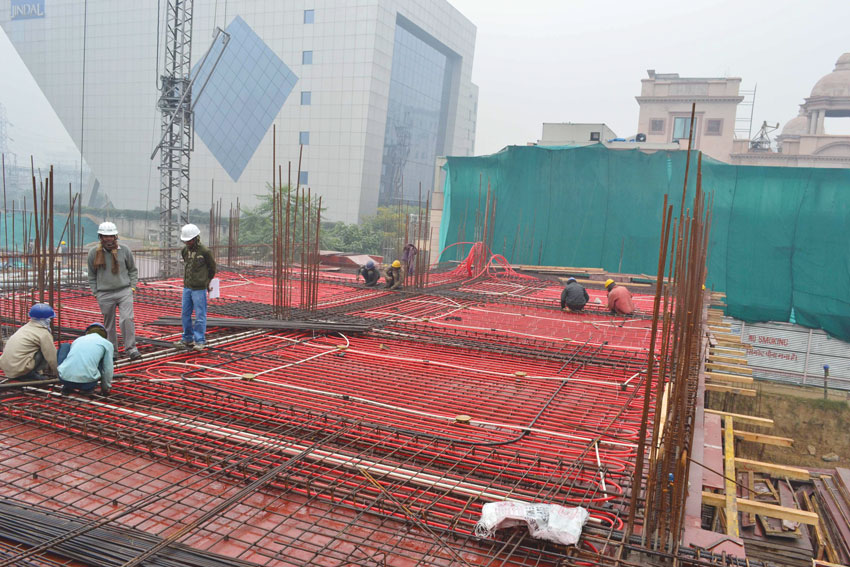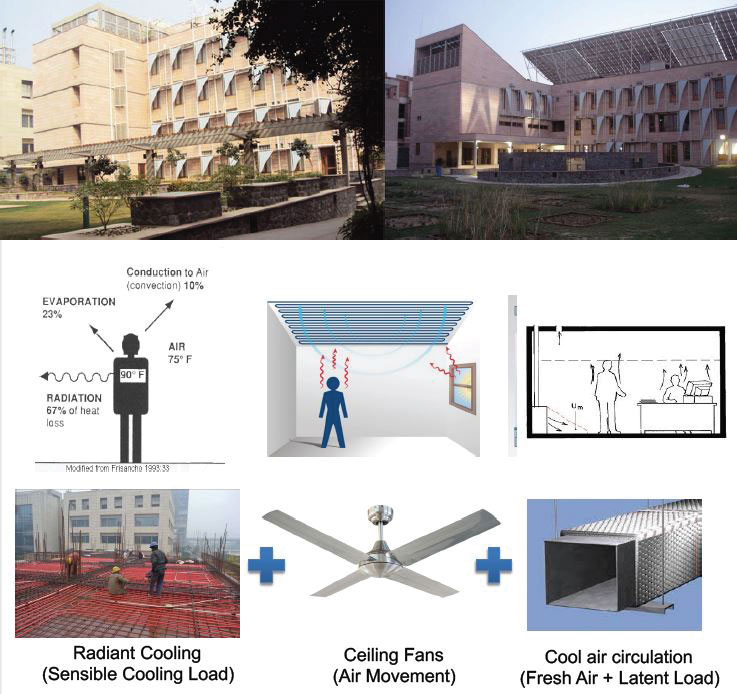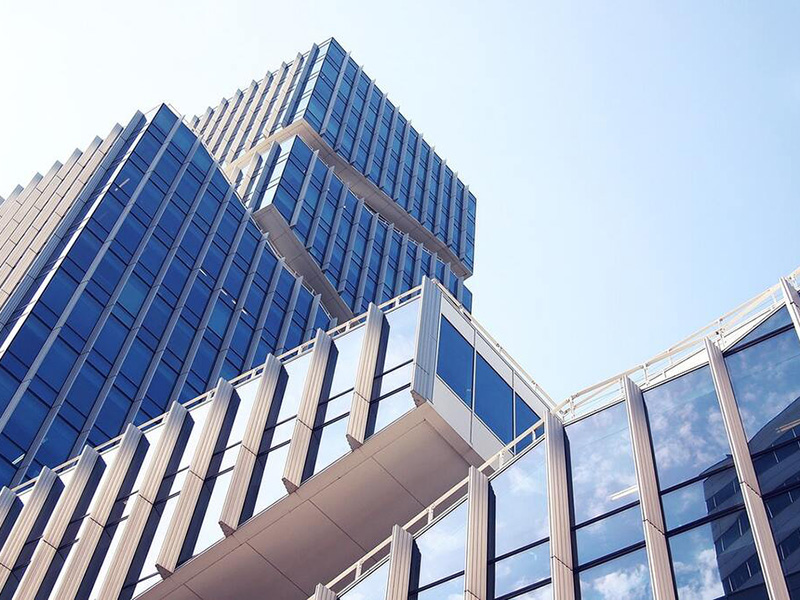The Institute of Rural Research And Development (IRRAD) office building is a sustainable building designed to meet the extremes of the composite climate. Noida-based dbHMS, Green Building Consultants, that has a strong base in building engineering fundamentals, used advance computing methodologies and extensive energy simulations to design the building's HVAC system, India's first Radiant cooling project. A radiant cooling system refers to a temperature-controlled surface that cools indoor temperature by removing sensible heat and where more than half of heat transfer occurs through thermal radiation.

After comparing various HVAC systems through simulation studies, an innovative Radiant Cooling was used as a primary cooling mode for the project. The unique features of the HVAC system have enabled this project to achieve 35 -.40% less operating cost. dbHMS used the following strategies for the designing and implementation:
Use of energy simulation in HVAC design
Extensive energy simulations were performed to select the appropriate cooling system and accurately size the HVAC system, and to accurately factor in occupancy, weather variations, diversity factors and then compare it with various other options. Energy simulations and HVAC design was done using advance computing methodologies.
Integration of Phase I & II
The HVAC design integrates previously completed Phase I with new design of Phase II. This allows an effective use of diversity in design and subsequent optimization of equipment sizing.
| Project: | IRRAD Office |
| Client: | Sehgal Foundation |
| Size: | 35,000 sqft |
| Scope: | HVAC Design |
| HVAC Design: | dbHMS, Noida |
| Status: | Completed 2012 |
| Green Rating: | LEED Platinum |

Radiant cooling
Major part of heat exchange from a human body happens through radiation. Hence, any cooling strategy which cools using radiation is the most efficient option for cooling the space. Radiant cooling has been used as a primarily cooling mode for the project.
Chilled water pipes inside slab
Flexible pipes are embedded in the slab which carries chilled water through the slab. All the cold is stored in the slab, which eventually exchanges the cold with the occupants.
Air supply at occupied zone
Air supply for the latent cooling is delivered at floor height. Supply of cool air at the lower level return air at higher level allows most efficient way of air circulation.
VAV boxes & VFD
The office has been divided into different thermal zones. Each zone has an individual VAV box, thereby allowing increasing or decreasing the air flow as per occupancy and load. VFD in the AHU reduces the fan speed accordingly, thus reducing the operational electricity consumption.
Night cooling
Use of radiant cooling inside slab allows chiller to operate at night and store all the cold inside the building structure. This reduces the chiller operation during day. As ambient temperatures are low at night time, higher efficiency is achieved at chiller energy consumption.
High efficiency chiller
High Efficiency Semi Hermetic Rotary Screw chiller is used for the project. The chiller has non CFC R-134 refrigerant which is environment-friendly. The high efficiency chiller helps in reducing operation cost for the project.
Investment & Payback
Though relatively higher priced, radiant cooling systems give value for money over the long-term by way of significant energy cost savings. The additional investment made on the IRAAD building to make it more energy efficient was around Rs.150/sqft in 2012 when the pipes were not available in India and had to be imported. But with pipes available in India now, the cost is set to reduce further. Payback is the time taken to recover the additional investment made in the building to make it more energy-efficient. For IRAAD, the payback was 1.5 years.
Advantages of Radiant Cooling
As we all know that heat transfer happens through Conduction, Convection and Radiation. Radiation contributes to more than 67% of heat transfer from a human body. Radiant Cooling or Heating is the most efficient way of heat exchange as it requires no medium. The same advantage is used in radiantly cooled buildings. Surface temperature of wall and roof is reduced. Human body then exchanges heat with that low temperature surface radiantly without requirement of circulating large amounts of air. This reduces energy consumption.
Radiant cooling offers advantages such as lower carbon emission, smaller chiller size, smaller AHU, smaller fans, chillers can run at night when their performance is higher, chilled water supply from chiller is typically at 15 deg C compared to 7 deg C for conventional HVAC, lower operating cost by 30-40%, and equal cooling in area with no hot spots.















